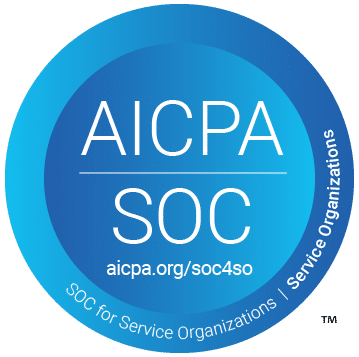Related Resources
As companies embrace AI and automation, the benefits, spiking productivity, better insights, and agility, are undeniable. Yet, these gains only pay off when automation is integrated thoughtfully and responsibly. A rushed, unchecked rollout can result in bias, mistrust, missteps, and regulatory fallout. Here's how organizations can apply AI and automation thoughtfully across their operations.
Why Responsible AI Matters & How to Apply it to Business Processes
The promise of using AI in business operations is powerful, but without the right frameworks and safeguards in place, organizations may leave themselves open to greater risks and vulnerabilities. Left unchecked, AI systems can entrench bias, violate privacy, generate hallucinations, and make high-stakes decisions with little transparency.
Responsible AI offers a framework to prevent these outcomes. It ensures that the technology enhances rather than replaces human judgment, protects against discrimination, and supports decision-making with explainable, auditable reasoning.
In regulated industries like finance and healthcare, responsible AI is already becoming a compliance issue. But even beyond regulation, ethical deployment signals maturity, foresight, and respect for users and employees alike.
Below are some of the ways that private sector companies can apply AI and automation responsibly to business processes.
Step 1: Define Purpose, Scope & Strategic Alignment
Responsible AI begins with a clear definition of the business process where AI or automation can offer tangible gains. Too often, organizations rush to implement the latest models or automation platforms without aligning them to real business needs.
A more measured approach begins by identifying where human decision-making is limited by scale, speed, or complexity, and determining whether automation can meaningfully help. This means aligning use cases with key business goals: whether you're scaling efficiency, improving client experience, or reducing operational risk.
Step 2: Establish Governance, Oversight & Ethical Frameworks
A strong governance structure ensures AI systems are trustworthy and auditable. Leading organizations create AI councils or steering committees that include voices from legal, compliance, cybersecurity, HR, and the business units themselves. These groups aren't there to slow things down; they exist to raise the right questions early.
Ethical AI frameworks from companies like Cisco, Atlassian, and Blue Prism emphasize principles like fairness, transparency, and reliability, but these values must be operationalized. That means building mechanisms for bias testing, documentation, auditing, and external review. It also means designing escalation protocols for when an automated system fails or produces unexpected results.
Step 3: Build an AI-Ready Data Foundation
AI is only as powerful as its underlying data. Organizations often overlook this step in the race to go live, leading to flawed assumptions, unreliable outputs, and ultimately poor business decisions.
To avoid this, leaders must invest in a data foundation that is clean, consistent, and contextual. That includes building centralized repositories where datasets from different parts of the business can be harmonized and understood. Metadata, documentation, and lineage tracking aren't optional; they're critical for ensuring models operate on accurate, interpretable inputs.
At the same time, transparency with stakeholders is non-negotiable. Customers and employees alike deserve to know when AI is being used, how their data is processed, and what choices they have in the system. Providing clear, accessible explanations for algorithmic decisions can be the difference between adoption and backlash.
Step 4: Design for Lifecycle Integrity
To ensure AI systems remain relevant and ethical over time, organizations need to adopt principles from disciplines like MLOps and ModelOps. These involve setting up version-controlled pipelines, regular retraining cycles, performance monitoring, and rollback plans.
It's equally important to build in human-in-the-loop mechanisms. Not every decision should be automated, and not every automated decision should go unchecked. Especially in high-impact areas like finance, healthcare, or HR, human oversight adds a crucial layer of judgment. When errors occur, fallback systems must allow for manual review, intervention, or override.
Step 5: Scale Gradually and Learn as You Go
The most responsible AI deployments start small. Instead of transforming the entire business overnight, forward-looking teams begin with a narrow use case, often one where the stakes are manageable and the outcome measurable. This creates an opportunity to test the organization's readiness, evaluate governance processes, and build confidence among stakeholders.
Successful pilots then serve as templates. The lessons learned (about integration, data quality, change management, and oversight) can inform future projects. This incremental approach also allows organizations to adapt as laws and standards evolve, rather than retrofitting responsibility into systems already in production.
Responsible Doesn't Mean Risk-Free — It Means Ready
No system is perfect. But responsible AI and automation practices ensure that organizations are equipped to handle the unexpected. When implemented thoughtfully, these technologies unlock real value: streamlining operations, improving decisions, and elevating experiences.
That value is only sustainable when built on a foundation of governance, integrity, and trust.
At Bronson.AI, we help organizations strike that balance. From identifying high-impact use cases to designing ethical oversight frameworks, we work with leaders to build automation strategies that are as thoughtful as they are transformative. Because the future of business isn't just automated — it's accountable.


